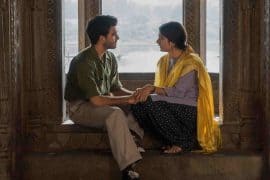and Aina
Winged and hoofed, horned and haloed, these fantastical friends of ours have guided us through many books and movies, showing us glimpses of their magical world. DU Beat opens the door to their realm a little wider.
Dragons
You may have caught a glimpse of one breathing fire in underground Gringotts in your worn- out copies of Harry Potter or chanced upon a full blown battle between one and Beowulf. Yes, the legendary, fantastical, majestic Dragon. In most European myths, Dragons are large, reptilian creatures with large bat like wings and two or four legs. The Chinese dragon, on the other hand, is typically portrayed as a long, scaled, serpentine creature. The Chinese dragon is believed to be benevolent as opposed to their European counter-parts. The Dragon was historically the Chinese Emperor’s symbol and has come to represent China culturally.
There was much furore about dragons existing in the Middle Ages but the good old archaeologists have established that there were no dragons. There is proof that the bones believed to belong to dragons are actually those of dinosaurs or wooly mammoths.
So that makes the dragons mythical, but that only adds to their splendor and magnificence.
Trivia
- Draco Dormiens Nunquam Titillandus
(“Never Tickle a Sleeping Dragon”) is the motto of Hogwarts School of Witchcraft and Wizardry. - Smaug, the dragon was the chief antagonist in The Hobbit by J.R.R. Tolkien.
- Dragon images have been found on the Ishtar Gate of Babylon, on scrolls from China, in Egyptian hieroglyphs and Ethiopian sketches, on the prows of Viking ships, in bas relief on Aztec temples, on cliffs above the Mississippi River and even on bones carved by Inuits in climates where no reptile could live.
Elves
Few beings arouse more awe and interest than the infinitely fair, light- haired immortals. Elves were first introduced in the Norse mythology. Although the concept itself is never clearly defined in the exact sources, the elves appear to have been conceived as powerful and beautiful human-sized beings. The myths about elves have never been recorded. Full-sized famous men could be elevated to the rank of elves after death, such as the petty king Olaf Geirstad-Elf.
The most common rendition of an elf today is drawn from Tolkien’s version who himself was greatly inspired by Norse culture. Elves, in the Lord of the Rings and other books by Tolkien , are described as immortal, fair and agile. Elves are also, in a lot of popular literature, considered to be rather small, pixie like creatures. In Harry Potter, J.K. Rowling depicts house elves as 2-3 feet tall, with spindly arms and legs and over-sized heads and eyes. They are bound to their masters and their nature is servile.
Trivia
- In the United States, Canada, the United Kingdom, and Ireland the modern children’s folklore of Santa Claus typically includes diminutive elves at Christmas; green-clad elves with pointy ears, long noses, and pointy hats as Santa’s assistants or hired workers.
- William Shakespeare imagined elves as little people. He apparently considered elves and fairies to be the same race. In Henry IV, part 1, act II, scene iv, he has Falstaff call Prince Henry, “you starveling, you elfskin!”, and in his A Midsummer Night’s Dream, his elves are almost as small as insects. On the other hand, Edmund Spenser applies elf to full-sized beings in The Faerie Queene.
- The original German elves (Old Saxon alf; Middle High German: alb, alp; plural elbe, elber; Old High German alb, by 13th century) are thought to be light creatures who lived in heaven during the era of Germanic paganism, and may have included dark elves or dwarves underground (as understood to be similar to the álfr of Old Norse mythology).
Vampires
With Twilight being all the rage these days, vampires have re-made a foray into popular culture. Although the series shows them in a very positive light, vampires were traditionally evil figures who feasted on the blood of humans and other living creatures. They were reported to be bloated and purplish or ruddy in colour owing to their intake of blood, in sharp contrast with present day descriptions of vampires as being fair and pale-skinned. Clad in the shrouds they were buried in, most representations showed blood dripping from their mouths and with long hair, nails and teeth. Though typically believed to be “undead”, some minor traditions believed them to be living people. The vampire as we know today was first created by John Polidori in 1819 in his book The Vampyre. However, it is Bram Stoker’s Dracula, published in 1897 which is considered the true vampire novel and continues to inspire modern vampire fiction even today.
Trivia
- In Slavik and Chinese traditions, corpses were supposed to become vampires once animals, particularly a dog or cat, jumped over it. On the other hand, according to Russian folklore, vampires were once witches or people who rebelled against the Church when they were alive.
- Vampiric elements are found in Indian mythology as well. For example, the Baital Pachisi mentions vetalas who were ghoul-like beings that inhabited corpses. Goddess Kali, with her flaming red tongue, garland of skulls and fangs was also linked to the drinking of blood.
In the 18th century, there was a frenzy of vampire sightings in Europe that later came to be called “The 18th Century Vampire Controversy” and gripped the nation for almost an entire generation, fuelled by superstitions and causing mass hysteria




Comments are closed.